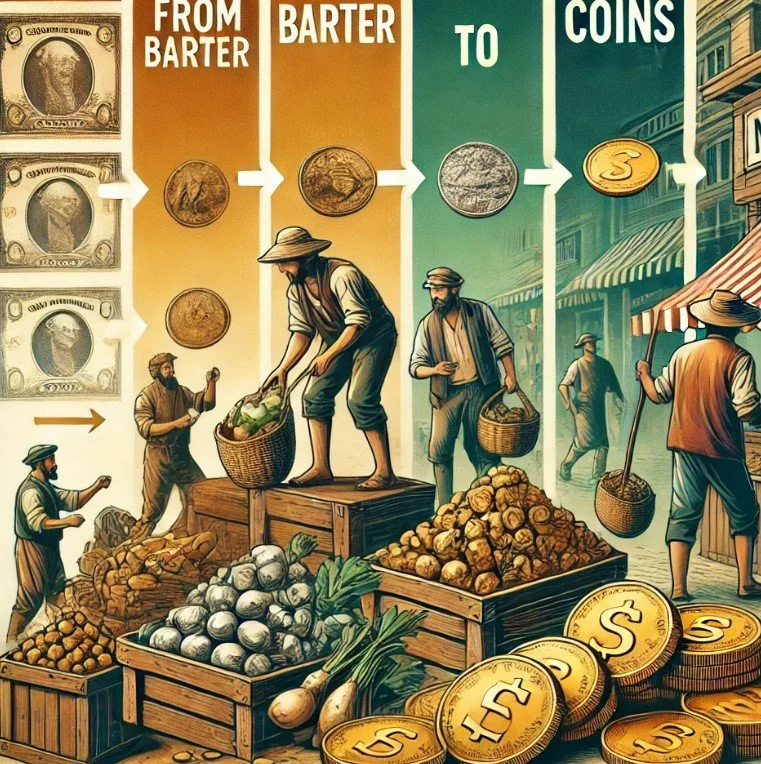Introduction:
What if you had to trade a dozen eggs for a sack of potatoes to get your breakfast? This scenario might sound far-fetched today, but it was a way of life during the era of the barter system. Before the invention of money, trade was a direct exchange of goods and services—a process full of challenges and ingenuity. Join us as we explore the journey from bartering to the creation of coins made from precious metals and how this innovation transformed human history.
Life Before Money: The Barter System
Imagine a bustling market where farmers, artisans, and merchants trade surplus goods. John, a potato farmer, and Cindy, a chicken farmer, create an exchange rate—5 pounds of potatoes for a dozen eggs. However, what happens when John wants apples, and the apple farmer doesn’t need potatoes? This is the conundrum of the barter system.
The Double Coincidence of Wants
Bartering relied on both parties wanting what the other had. If this "double coincidence of wants" didn’t align, no trade could occur. This inefficiency spurred the search for a more universal medium of exchange.
The Invention of Money
Enter coins made of gold and silver—a game-changer for trade and markets. These metals were universally valued, portable, and divisible, making them the perfect solution for the challenges of bartering.
Why Learning About Money Matters
Understanding the origins of money helps us appreciate its value in modern society and provides insights into how economies function.
Conclusion:
The evolution from bartering to coins marks a significant milestone in human history. This blog is just the beginning of our journey into the fascinating world of money. Click here to see our 1st lesson about the Barter System. Subscribe to our channel and stay tuned for the next episode, where we’ll dive into the functions and characteristics of money! #Bitcoin #financialeducation #financialliteracy

